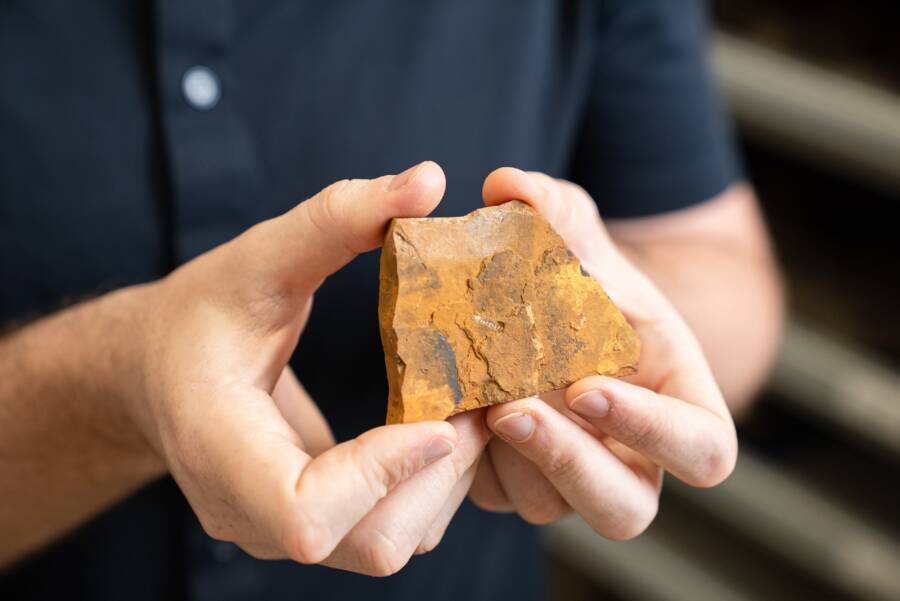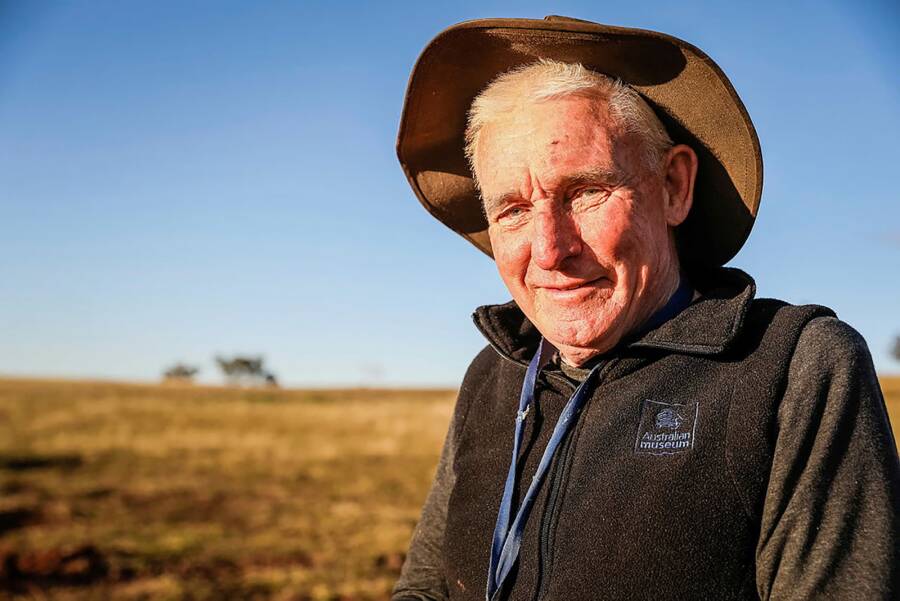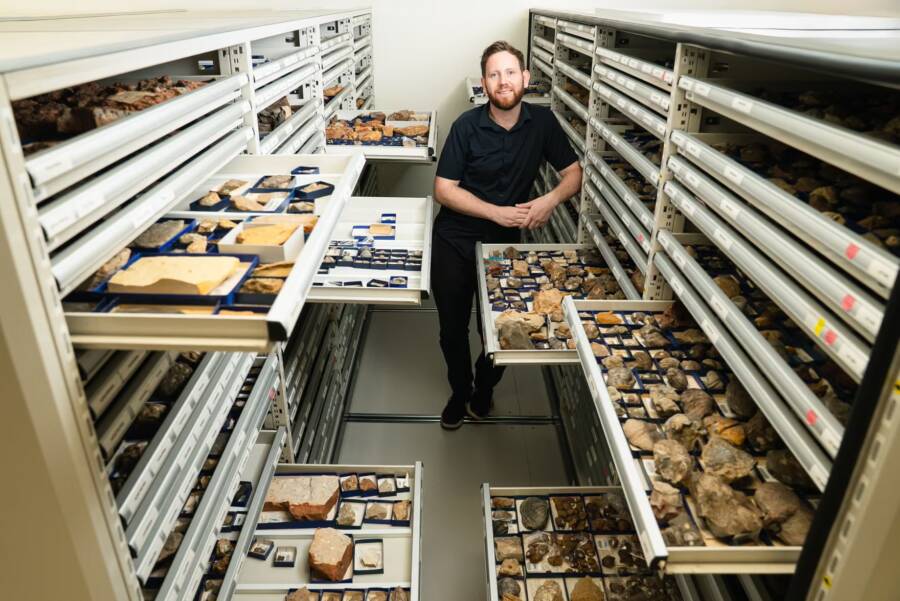Scientists recently examined a set of fossils gathered by 82-year-old Robert Beattie and identified a new species of non-biting midge — the oldest ever found in the Southern Hemisphere.

Louise Reily/Australian MuseumThe fossils containing Telmatomyia talbragarica.
A lifetime of amateur fossil hunting has led to the discovery of a new species of non-biting midge — a small type of fly — that lived roughly 151 million years ago.
Robert Beattie, an 82-year-old retired teacher, has had a fascination with fossils ever since he was a child. Over the years, he’s donated numerous specimens to the Australian Museum, including prehistoric fish and insects found in fossil beds across the country.
But one particular set of fossils from the Talbragar Fish Beds site in New South Wales recently caught the attention of scientists. A closer examination of these specimens revealed that Beattie had brought them something truly extraordinary: the oldest non-biting midge fossil ever found in the Southern Hemisphere, which just happened to be a previously unknown species.
The results of their study have now been published in the journal Gondwana Research.
Robert Beattie’s Lifelong Fascination With Fossils
It took the museum’s paleontologists years to identify the new species, but for Beattie, the discovery was the result of a lifetime of fossil hunting.
Back in 1948, when he was just a boy, Beattie was vacationing with his family in New South Wales when he came upon a shell embedded in a rock. He soon learned that this rock was actually a Permian fossil that was hundreds of millions of years old.
“I couldn’t believe it,” Beattie told The Guardian. “I’ve been interested in fossils ever since.”

Salty Dingo/Australian MuseumRobert Beattie, the man who found the fossils.
Beattie has visited countless dig sites throughout his life, scouring Australia’s eastern states for prehistoric relics. In the 1960s, he studied paleontology at Macquarie University and then spent his professional life working as a science and agriculture teacher before retiring at the age of 59. Throughout it all, he had been working with the Australian Museum, providing the institution with specimens he found.
After retiring, Beattie immersed himself in his passion for fossil hunting even further. But it was a 2016 conference in Scotland that prompted the research that would define his career.
Beattie gave a presentation in Edinburgh on some tiny insects he’d discovered at Talbragar, a fossil site in the central tablelands of New South Wales. In attendance was Dr. Viktor Baranov, a paleontologist at the Doñana Biological Station in Spain who happened to know a thing or two about the insects.
“You know those things you had up on the screen?” he asked Beattie. “They are midges.”
Four years later, Baranov visited the Australian Museum to take a closer look at Beattie’s fossils. The subsequent years of work would ultimately challenge long-held scientific assumptions about the evolution of prehistoric midges.
Talbragar Midge Fossils Point To Origins In The Southern Hemisphere
In the new research paper, Baranov and his colleagues identified the midges found in Beattie’s fossils as a new species, giving it the name Telmatomyia talbragarica (meaning “fly from the stagnant waters”). The specimens date to the Jurassic period and belong to the Podonominae subfamily of midges.
“Robert collected these fossils over about a 10-year period,” said study co-author Dr. Matthew McCurry of the Australian Museum. “We really didn’t understand the importance until we started studying them quite recently.”

Louise Reily/Australian MuseumMatthew McCurry with the Australian Museum’s fossil collection.
For years, scientists assumed these freshwater insects evolved in the Northern Hemisphere, largely because the oldest known fossils were found in regions like China and Siberia — parts of the prehistoric supercontinent Laurasia.
Notably, Beattie’s specimens were the oldest ever found in the Southern Hemisphere, which may challenge the assumed narrative of how they evolved. Researchers also stated that the age and location of the fossils provide compelling evidence for the theory that midges originated from the southern supercontinent Gondwana, not Laurasia.
“We’re putting so much more effort into finding fossils in the Northern Hemisphere — that results in biases in our understanding of the past as well,” McCurry said. Telmatomyia talbragarica helps correct this long-standing geographical skew in paleontological research, he said.
This find suggests that when researchers actively investigate sites in the Southern Hemisphere, they often yield discoveries that challenge the established record.
After reading about the discovery of this prehistoric midge, learn about a more modern fly, the damselfly. Then, discover seven insects that will give you nightmares.





